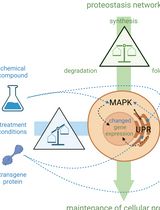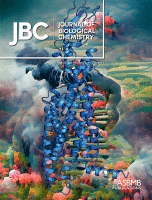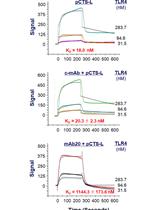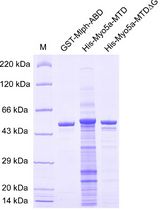- EN - English
- CN - 中文
Protein Pull-down Assay Using HiBiT-tag-dependent Luciferase Activity Measurement
使用 HiBiT 标签依赖性荧光素酶活性测量的蛋白质下拉分析
发布: 2023年03月20日第13卷第6期 DOI: 10.21769/BioProtoc.4640 浏览次数: 2569
评审: Gal HaimovichKeisuke TabataAnonymous reviewer(s)

相关实验方案

Cell-Sonar:通过特定蛋白标志物表达变化追踪目标蛋白的简便低成本方法
Sabrina Brockmöller [...] Simone Rothmiller
2025年02月05日 1609 阅读
Abstract
Co-immunoprecipitation or pull-down assays are frequently used to analyze protein–protein interactions. In these experiments, western blotting is commonly used to detect prey proteins. However, sensitivity and quantification problems remain in this detection system. Recently, the HiBiT-tag-dependent NanoLuc luciferase system was developed as a highly sensitive detection system for small amounts of proteins. In this report, we introduce the method of using HiBiT technology for the detection of prey protein in a pull-down assay. Using this protocol, we demonstrate the formation of a ternary complex consisting of Japanese encephalitis virus NS4B and two host factors, namely valosin-containing protein, and nuclear protein localization protein 4, which is a critical biological event during flavivirus replication in cells.
Background
Most proteins interact with their partner proteins to carry out their biological activity. To understand the role of proteins in cells, co-immunoprecipitation (co-IP) or pull-down assays are frequently used to characterize protein–protein interactions. Western blotting (WB) is commonly used to detect prey proteins in co-IP or pull-down assays. However, its sensitivity is low or dependent on the primary antibody, and it gives inaccurate quantification.
High Bit peptide of NanoLuc Binary Technology (NanoBiT) (HiBiT-tag, amino acid sequence: VSGWRLFKKIS) is a part of split NanoLuc luciferase that can reconstitute intact NanoLuc luciferase when another part of split NanoLuc luciferase, Large Bit peptide of NanoBiT (LgBiT), is present. Therefore, the addition of recombinant LgBiT protein and NanoLuc luciferase substrate and measurement of luminescence facilitates the detection of HiBiT-tag (Dixon et al., 2016). Since HiBiT-tag is a short peptide tag with a length of 11 amino acids, it has a minimum effect on the function of fused proteins. Furthermore, a HiBiT-tag-dependent NanoLuc luciferase detection system is useful for quantifying small quantities of protein, because the signal-to-noise ratio is significantly high in NanoLuc luciferase–dependent luminescence, which allows for small-scale experiments. The procedure is simple and therefore suitable for high-throughput assays. In this report, we introduce the method of using the HiBiT-tag-dependent NanoLuc luciferase system for the detection of prey protein in a pull-down assay. Generally, proteins form an oligomeric complex with various partners. In these cases, the depletion of key subunits significantly affects the formation of the entire complex. In this report, we demonstrate that depletion of a mediator protein affects ternary complex formation.
Japanese encephalitis virus (JEV), a single-stranded positive-sense RNA virus, is a human pathogenic flavivirus. In JEV-infected cells, endoplasmic reticulum membrane–derived large compartments (also called viral replication organelles) are observed. Viruses have been considered to efficiently replicate in these compartments, which may be a target for the development of antiviral reagents (Arakawa and Morita, 2019). Previously, our group reported that the host factor valosin-containing protein (VCP) is recruited to the viral replication organelle and helps in viral genome replication (Tabata et al., 2021). However, no direct interaction between VCP and viral proteins were detected. Our previous study revealed a mediator that bridges the interaction between them. We found that the interaction of nuclear protein localization protein 4 (NPL4), a VCP-associating co-factor, and NS4B, a nonstructural viral protein that localizes on the viral replication site, is important for the recruitment of VCP to the viral replication organelle. We have shown that depletion of NPL4 via siRNA knockdown significantly reduces the affinity between VCP and NS4B, through pull-down assay utilizing HiBiT-tag-dependent luciferase activity (HiBiT activity) measurement (Arakawa et al., 2022) (Figure 1A). HiBiT-tagged NS4B and One-Strep-FLAG (OSF)-tagged VCP were co-expressed in 293T cells and the VCP were affinity-purified using Strep-Tactin beads (Figure 1B). The amount of NS4B in the VCP-bound fraction was then determined in the presence of NPL4 and compared with that in the absence of NPL4 by measuring HiBiT activity (Figure 2C). This protocol is not only useful for studying virus–host interactions, but also has broader applications in the investigation of general protein–protein interactions.
Materials and Reagents
1.5 mL tubes (WATSON, catalog number: 8064131815C)
0.22 μm filter (AS ONE, catalog number: 033022SO-SFCA)
6 cm cell culture dish (Thermo Scientific, catalog number: 150462)
Cell scraper (VIOLAMO, catalog number: 1-2249-01)
White 384-well immuno plates (Thermo Scientific, catalog number: 460372)
293T cells (ATCC: CRL-3216)
Plasmid pCAG-NS4B-FLAG-HiBiT, which encodes HiBiT-tagged JEV NS4B protein (Arakawa et al., 2022)
Plasmid pCAG-OSF-VCP, which encodes One Strep–tagged VCP proteins or is empty (Arakawa et al., 2022)
siRNA-luciferase, which targets firefly luciferase (sense sequence: 3′-CGUACGCGGAAUACUUCGAtt-5′)
siRNA-NPL4, which targets NPL4 (sense sequence: 3′-CUGAAGUGGUCGAUGAAAUtt-5’)
Nano Glo HiBiT lytic detection system (Promega, catalog number: N3040)
Dulbecco’s modified Eagle’s medium (Nacalai Tesque Inc., catalog number: 08458-16)
Fetal bovine serum (FBS) (Thermo Scientific, catalog number: 10270-106)
Phosphate-buffered saline (PBS) without calcium and magnesium (Nacalai Tesque Inc., catalog number: 14249-24)
Benzylpenicillin potassium (Fujifilm Wako Pure Chemical Corporation, catalog number: 021-07732)
Streptomycin sulfate (Tokyo Chemical Industry, catalog number: S0585)
Strep-Tactin Sepharose 50% suspension (IBA Lifesciences GmbH, catalog number: 2-121-010)
Strep-tag elution (10× buffer E) (IBA Lifesciences GmbH, catalog number: 2-1000-025)
cOmplete, EDTA-free, protease inhibitor cocktail (Roche, catalog number: 11873580001)
LipofectamineTM 3000 transfection reagent (Thermo Scientific, catalog number: L3000015)
LipofectamineTM RNAiMAX transfection reagent (Thermo Scientific, catalog number: 13778150)
Opti-MEM (Thermo Scientific, catalog number: 31985062)
Tris (Tris[hydroxymethyl]aminomethane) (Nacalai Tesque Inc., catalog number:35406-91)
NaCl (Nacalai Tesque Inc., catalog number: 31320-05)
Triton X-100 (Nacalai Tesque Inc., catalog number: 35501-15)
100× penicillin G + streptomycin stock solution (see Recipes)
Culture medium (see Recipes)
Pull-down washing buffer (see Recipes)
100× concentrated cOmplete stock solution (see Recipes)
Lysis buffer (see Recipes)
HiBiT reagent (see Recipes)
1× Strep-tag elution buffer (see Recipes)
Equipment
Humidified incubator (37 °C, 5% CO2)
Microplate luminometer (Thermo Scientific, Varioskan LUX Multimode Microplate Reader)
Vortex mixer (Scientific Industries, model: Vortex-Genie 2)
Centrifuge machine for microtube (Thermo Scientific, model: SorvallTM LegendTM Micro 21R)
Rotator (BIO CRAFT, model: BC-710I)
Procedure
文章信息
版权信息
© 2023 The Author(s); This is an open access article under the CC BY-NC license (https://creativecommons.org/licenses/by-nc/4.0/).
如何引用
Readers should cite both the Bio-protocol article and the original research article where this protocol was used:
- Arakawa, M. and Morita, E. (2023). Protein Pull-down Assay Using HiBiT-tag-dependent Luciferase Activity Measurement. Bio-protocol 13(6): e4640. DOI: 10.21769/BioProtoc.4640.
- Arakawa, M., Tabata, K., Ishida, K., Kobayashi, M., Arai, A., Ishikawa, T., Suzuki, R., Takeuchi, H., Tripathi, L. P., Mizuguchi, K., et al. (2022). Flavivirus recruits the valosin-containing protein-NPL4 complex to induce stress granule disassembly for efficient viral genome replication. J Biol Chem 298(3): 101597.
分类
生物化学 > 蛋白质 > 相互作用 > 蛋白质-蛋白质相互作用
微生物学 > 微生物-宿主相互作用 > 病毒
您对这篇实验方法有问题吗?
在此处发布您的问题,我们将邀请本文作者来回答。同时,我们会将您的问题发布到Bio-protocol Exchange,以便寻求社区成员的帮助。
Share
Bluesky
X
Copy link










